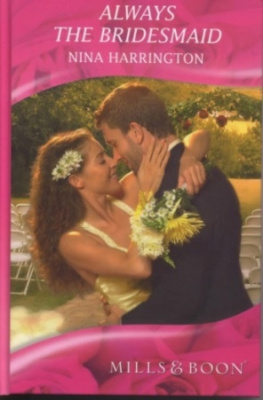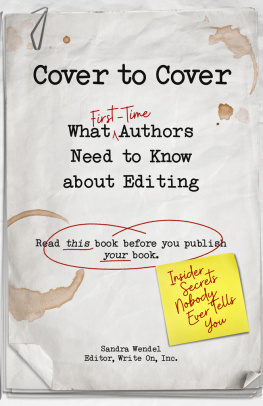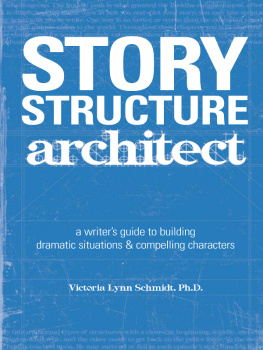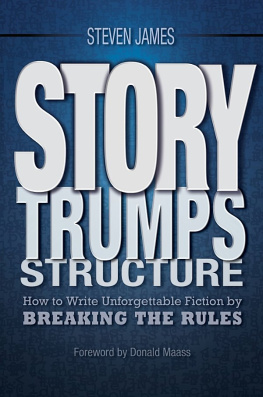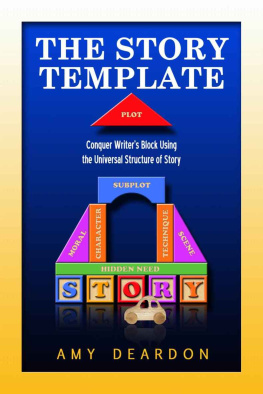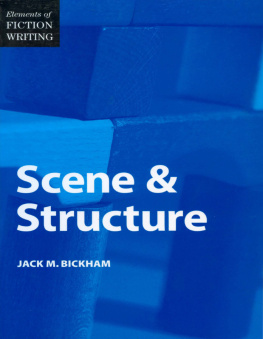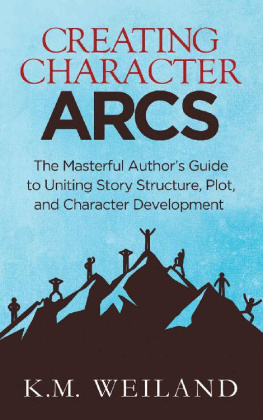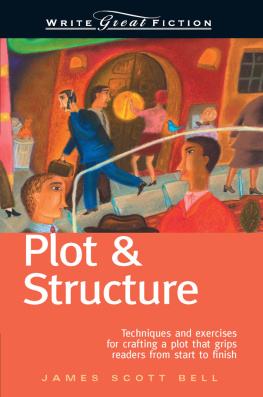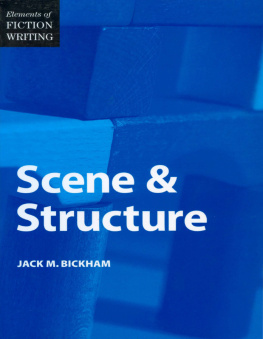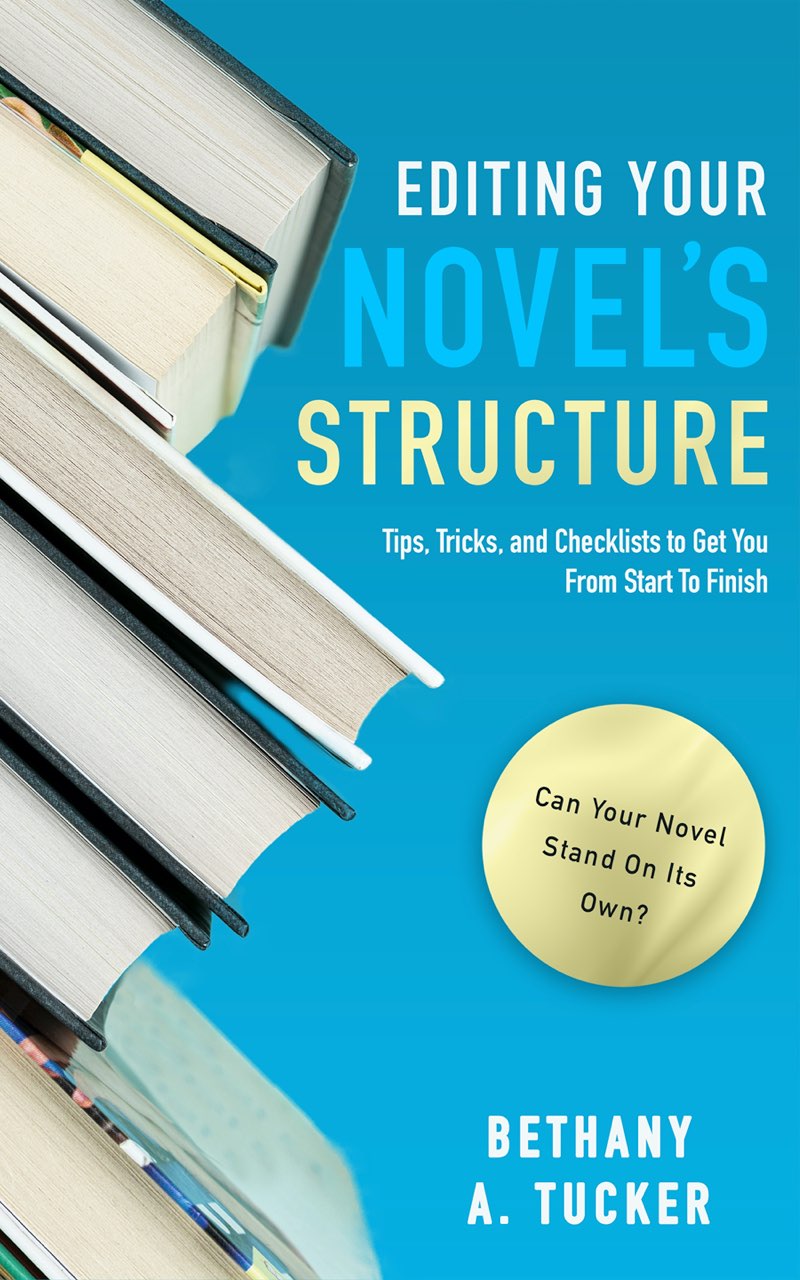Editing Your Novels Structure:
Tips, Tricks, and Checklists to Get You From Start to Finish
Bethany A. Tucker
Contents
I.
II.
III.
IV.
V.
the Back and Forth Method
VI.
VII.
VIII.
IX.
Copyright Page
Cover Design by:
Hannah Linder Designs
www.hannahlinderdesigns.com
Editing by:
M.S. Wordsmith
mswordsmith.nl
Copyright 2020 by Bethany A. Tucker.
Reproduction in whole or part of this work without express written consent is strictly prohibited.
Special Thanks
Special thanks to Emma Dhesi whos invitation to speak on this topic inspired this book.
And to Louvie Tucker, my husband, who read early versions of this book and supports me in my writing far beyond what I could ask for.
Introduction
This is a handbook, meant to be read quickly, used, referenced, and then applied in whatever manner you find useful. It can be read linearly, dissected and used in pieces, or picked up for inspiration when you find yourself hitting a bump in the road.
If youre editing your very first book, I suggest giving this a full read, front to back at least once. Its quite short and wont take you too long. If you are on your second or third book and have never worked with a developmental editor of significant experience before, I would still suggest giving these pages one thorough read to start.
Afterwards or if you are more experienced already, use and choose to your hearts content.
The material appears in the following order:
- Explanation of who this handbook is for, what this handbook is about and what it is not about.
- Definition of Structure
- A short discussion of structure and what it is when applied to fiction.
- When to use the material in this handbook.
- The One and Only Rule I will give you.
- Explanations of each pillar of story as it applies to structure: Characters, Character Arcs, Plot, Chronology, Backstory, Voice, and Point of View. Each section is broken down into subsections and most come with a set of quick reference questions to use while performing your structural edit.
- Detailed explanations of nearly free self-editing tools and how to apply them to your book to find your own structural problems.
- A close look at Beginnings and Endings.
- Editing for sensitive and specialized subject matter.
- Some helpful tips on choosing alpha/beta readers, when to seek and editor, and a sample questionnaire to give to your first readers.
The contents of this handbook are in no way exhaustive. In service of brevity and ease of use, there are entire sections of fiction writing I have left untouched and areas where only the main ideas have been examined. This is, essentially, the starter manual that I would have loved to have had years ago, both so I could have given it to some of the writers I was coaching then, and to have had for myself before that, as I fumbled forward self-editing my first few novels.
If you are an experienced author with five or more books under your belt, then this may not be the book for you. Then again, you might find a few nuggets or ideas to add to your tool kit. The concepts presented here may appear elementary, but the application is exactly at the level you choose to apply it.
Who Is This Handbook for?
This handbook is for the writer working on their first few books. In a world full of wonderful craft manuals, this handbook is designed specifically to provide assistance in getting over that hump between the sprawling, rough first draft and the polished work it still needs to become.
Many of us pick up the pen, sit down at a keyboard, or grab a voice-to-text recorder and start telling the story. Thats where I started as did pretty much every author I know. That budding excitement simmers up and a scene, character, or concept demands to be put out into the world. So, we get it down. We scribble and dream, and pace, and think and write some more.
Sometimes fear slows us down. Sometimes a friend kicks us in the rear and demands we finish. We start to see the flaws in the story, wrestle with them, go back, rewrite, put down more new material.
Eventually, we have a work. Rough. Unpolished. The very best we could pour out of ourselves. The plan may have been sketchy. The road may have taken us places we never expected, but we have this thing weve created, many limbed and with two or three different heads. Its a monster, and its our beloved child.
Or perhaps we havent quite reached the end but we know the flaws are so large, we must go back and fix it all before we can continue. You may feel you are staring up at a mountain top, trying to find a rope to help you up.
This handbook is for you, no matter which of these scenarios you find yourself in. This is the handbook I could have used all those years ago as I stared at stack after stack of printed-out manuscripts, knowing that none of them were quite good enough but not really knowing how to move forward either.
What This Handbook Is Not About
This handbook is not about grammar, phrasing, paragraph splicing, or how long your chapters should be. You can impose all such things upon a story once you have a story. There are three levels of editing, though they often interweave with each other in practice. This handbook will only concern itself with the first level of editing: developmental.
For reference, the second level of editing is Line-by-Line or just Line editing, which is where we attend to grammar, word choice, the passive voice, and too many adverbs. This is a vital part of writing a book or any piece of fiction or nonfiction.
We usually refer to the third level of editing as Proofreading, which is the very final pass. It is at this stage you check for overlooked errors in spelling, typesetting/formatting, or misplaced grammatical marks.
The developmental edit, which is what this handbook is concerned with, deals with the structure of the story itself. Stories must have an internal structure that holds them together. As I told one of my writing students recently, You wont be there every time someone reads this, to explain it to them. If somethings important for understanding the story, it cant stay in your head. It has to be on the page.
Once you have the structure of your story, standing strong and sturdy like a fine house, you can attend to choosing the color of the drapes and buying flowers for the window. Until then, it doesnt matter how beautiful your prose or how flawless your grammar is. These are carpet and flooring. If you have to keep moving the walls and shifting staircases to make the plot work, youre going to destroy that carpet long before the house is finished.
Get the structure sound, then worry about the rest. It will save you months if not years of heartache.
What is Structure?
Lets continue to think of Story as a house. It needs a foundation, weight-bearing walls, a roof, a floor plan, plaster or dry wall, doors, and windows. In a word, structure.
Structure includes Plot, Setting, Characters, Chronology, Backstory, Voice, and Point of View.
Without Plot, your story would be a series of random events happening one after another. Although there are experimental pieces of fiction that play with having a plotless format, these are rare and not necessarily books with a large audience.




